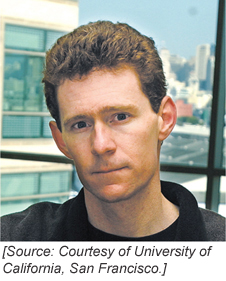Chapter Introduction
8: Genomes, Transcriptomes, and Proteomes
259
MOMENT OF DISCOVERY

When the SARS virus emerged as a new infectious disease, at first no one knew what was causing the infection. There were thousands of cases around the world, and because 14% were fatal, it was clearly a public health emergency, especially because we didn’t know at the time if the infection could be contained.
There were two big moments of discovery in my own lab that came about as we worked around the clock to identify the new infectious agent. The first came when we put samples from infected patients on our ViroChip, which contains fragments of conserved DNA sequences from all known types of viruses. I recall watching the spots lighting up on the scanner, and we could see that this new virus had sequences similar to coronaviruses from birds, cows, humans—
The second exciting moment came over the next couple of days as we began working nonstop to clone and sequence bits of the virus genome from the ViroChip array. Sequences were determined by a standard method in which the cloned bits were copied by a polymerase using fluorescently labeled nucleotides. I sat by the sequencer watching as each fluorescent nucleotide was detected, and I wrote down each base by hand because I couldn’t wait for the run to finish to see what the sequences were! This level of intensity doesn’t happen every day—
—Joe DeRisi, on his discovery of the SARS virus
260
Molecular biologists approach their subject at many levels. With the birth of biotechnology in the 1970s, the focus was on genes—
The shift was made possible by continuing advances in technology. The sequencing of individual genes has been supplanted by sequencing projects that encompass all of an organism’s DNA—